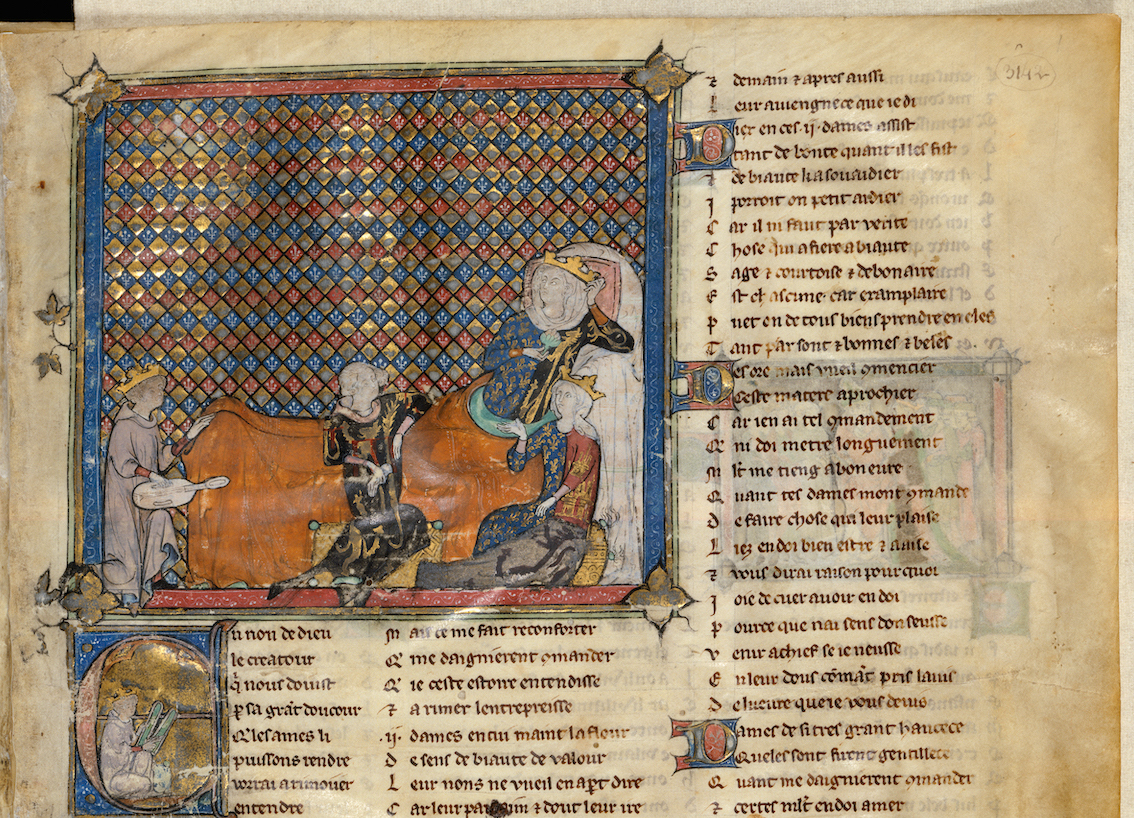
My research, teaching, and writing focus on Premodern Europe and the Mediterranean within a global context, especially rooted in questions of gender studies, spatiality, and materiality within the environment. These themes can provide the tools and the energy to build commonalities and celebrate diversities in society. In the broadest sense my scholarship examines the means by which artistic creation, patronage, collection, and exchange make women’s lives visible, as revealed through close study of the objects and materials that were created by and for them within the larger socio-political context.
While much of my research has been centered in Europe and the Mediterranean basin, the women about whom I have primarily written come from both local and distant lands as part of the political marriage market, and the objects and materials they import and consume often come from greater distances still. Utilizing mapping, both historic cartographic sources as well as the creation of digital visualizations, allows me to both focus in upon and draw back to analyze the varied landscapes within which the women and objects were located.
My definition of material culture is widely writ and I offer my audience multiple avenues to examine past cultures and periods in the forms of precious jewels, carved ivory, wood, and stone, the painted page and wall, the woven textile, fired ceramic and glass, cast metalwork, the land itself. I approach these objects spatially to include both the exterior and interior spaces framing them as well as the ritual and journeys that often joined them together.
Approaching all things as having identity has allowed me to consider themes, in both my teaching and my research, that push on disciplinary boundaries so that I am as often collaborating with my STEM colleagues as those in the Arts and Humanities. Also, while my primary research focus is pre-modern, this same openness to a variety of approaches has allowed me to design classes like my “Seminar on Digital Art History,” out of which came Race in Medieval Richmond and VCU’s Virtual Anderson (listed under Digital Projects) where I was teaching graduate students and working with colleagues from across the university. Similarly, courses like “The Whole World: Cartography as History, Art, and Ideology” and “The Land as Art” study how cultures have interpreted and interacted with the environment from prehistoric cave paintings to South Pacific sea navigation to post-colonial commentary through land art produced by contemporary indigenous artists of the Americas.
Thus, I bring my research interests in cross-cultural interaction directly into my writing and teaching, drawing on time-tested as well as innovative sources and always forging links between these eras of the past and how they impact and are relevant to current events, the larger public, and our community.
In addition to a deep love of material culture and environment from around the globe, I am interested in how the digital can aid us in forging connections between its diverse cultures as well as with us in the present day.
Therefore I increasingly look to how digital art history, museum curation, and cultural heritage can visualize the past in ways which enhance our ability to study and see its many facets. Tools that I use to enhance my own, my students, and the larger public’s research and questions include:
mapping and database creation,
photogrammetry and 3D photography,
virtual exhibitions built with game engines to create alternate display spaces and immersive experiences,
and applying augmented reality to object contextualization and analysis in museums and other cultural institutions.
I have held positions at Virginia Commonwealth University, the University of Richmond where I was an NEH Visiting Associate Professor, and Sweet Briar College, where I originally received tenure. I returned in the fall of 2021 as Associate Professor and Director of Faculty Development in whose role I work closely with our VP of Academic Affairs to support and strengthen our faculty through innovative programming. I am also currently the Vice President of the International Center of Medieval Art and will begin my three-year tenure as president of this thriving organization in February 2026. I have chaired my department for well over a decade, served on a variety of boards, disciplinary advisory, and grant committees, both within the university and without. I regularly hold local, national, and international mentoring programs on the digital humanities for scholars, students, and non-scholars alike. I relish creating synergies with people and crafting new approaches to what higher education, our varied disciplines, and the diverse communities we serve can do to make our world a better place for all of us.
